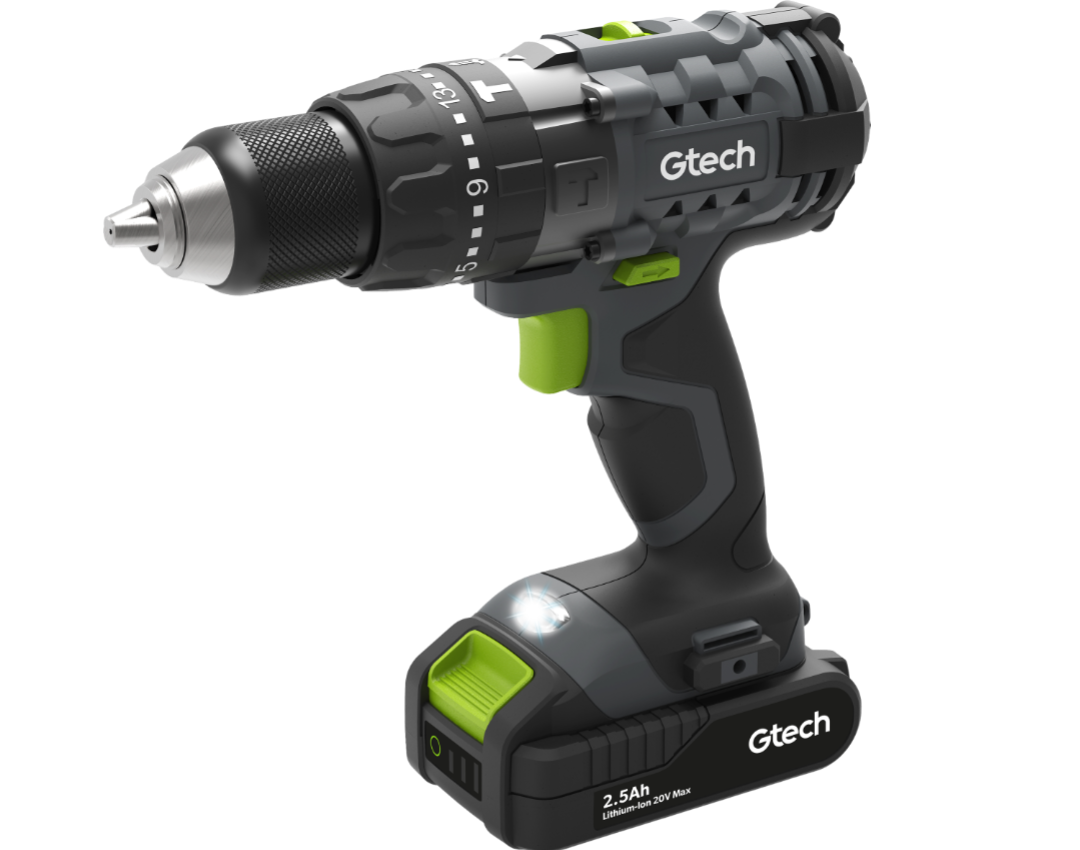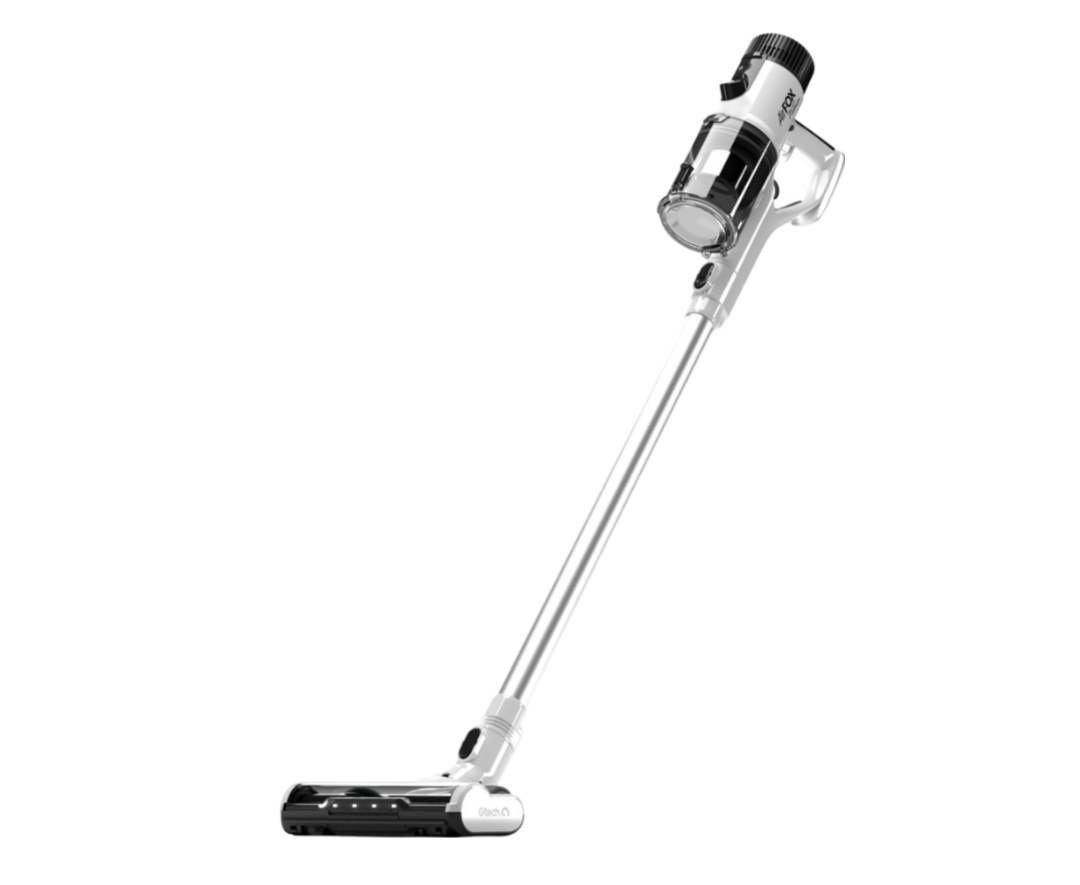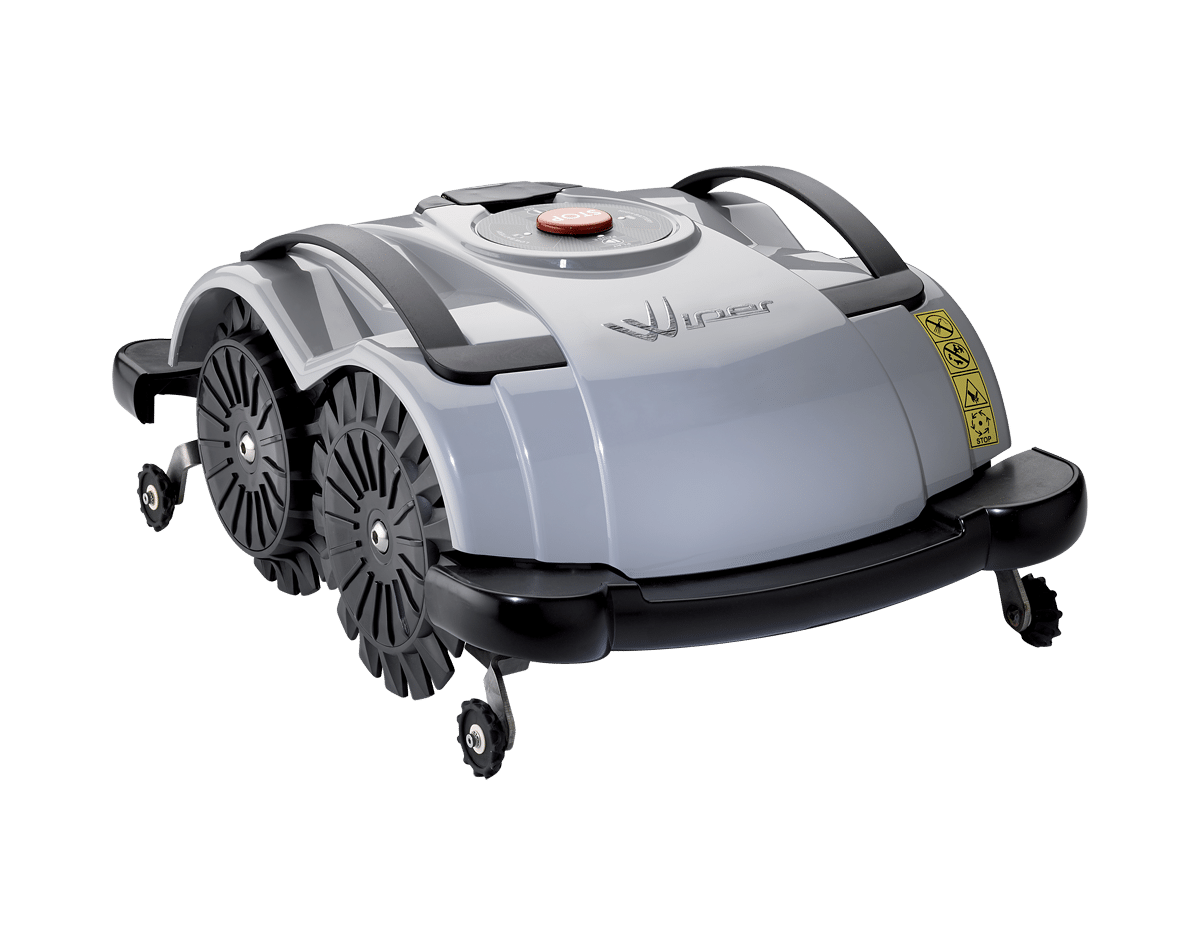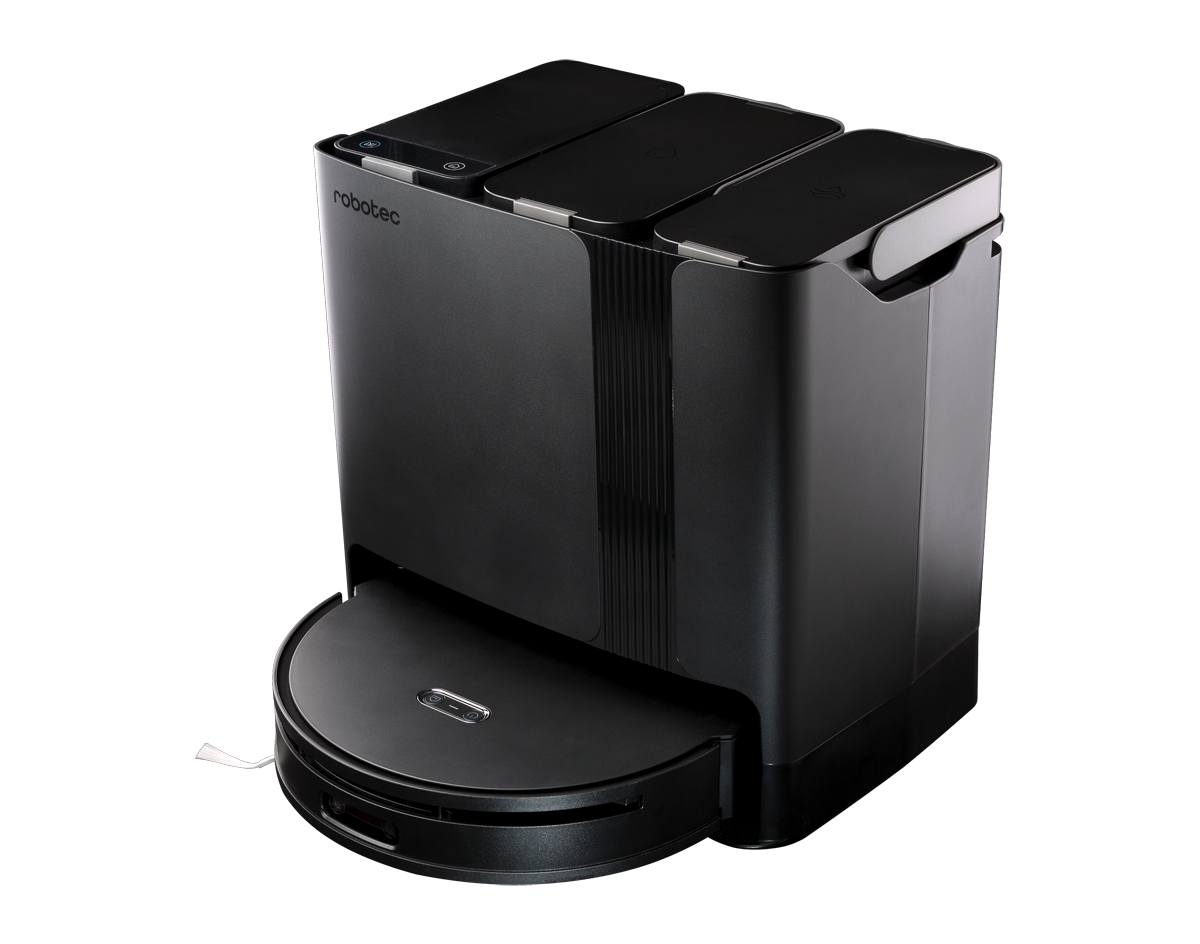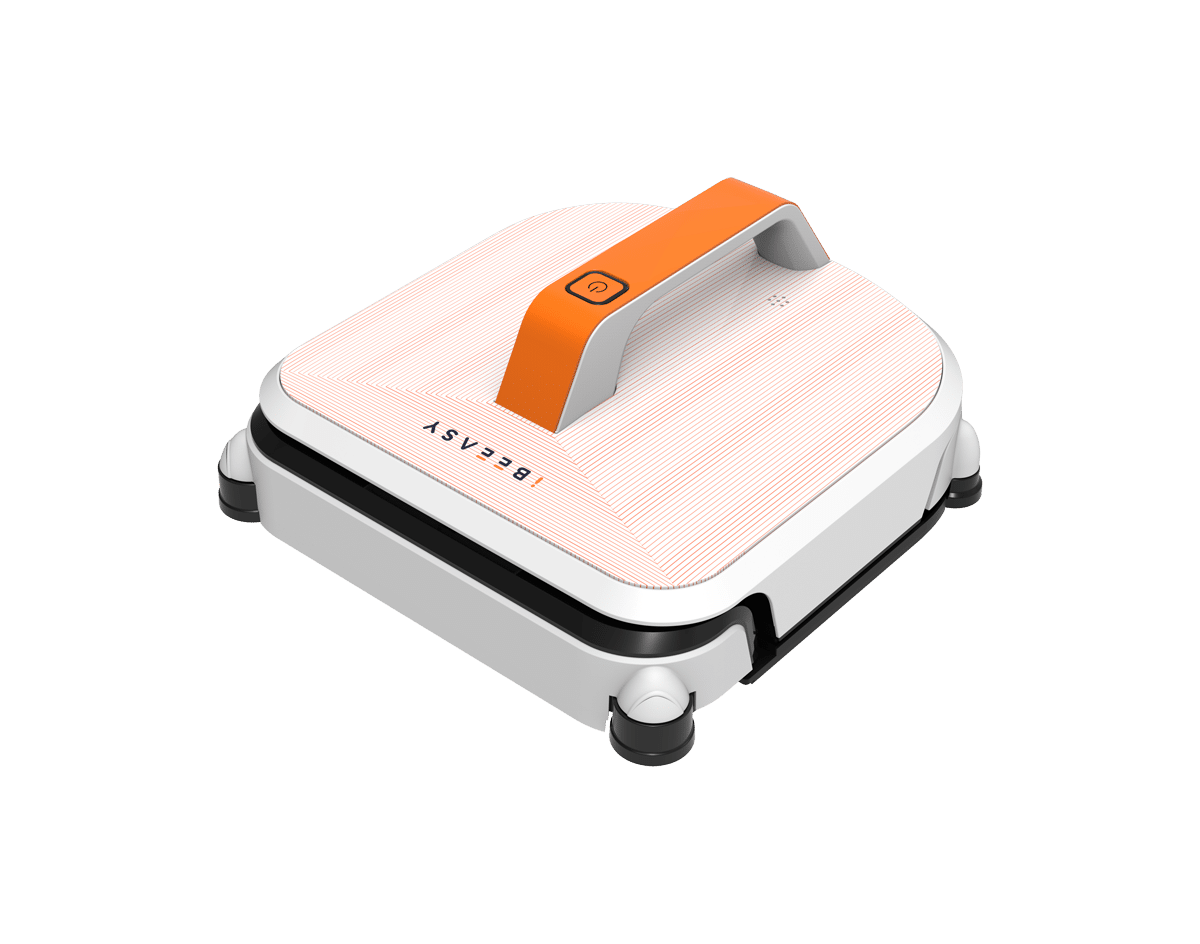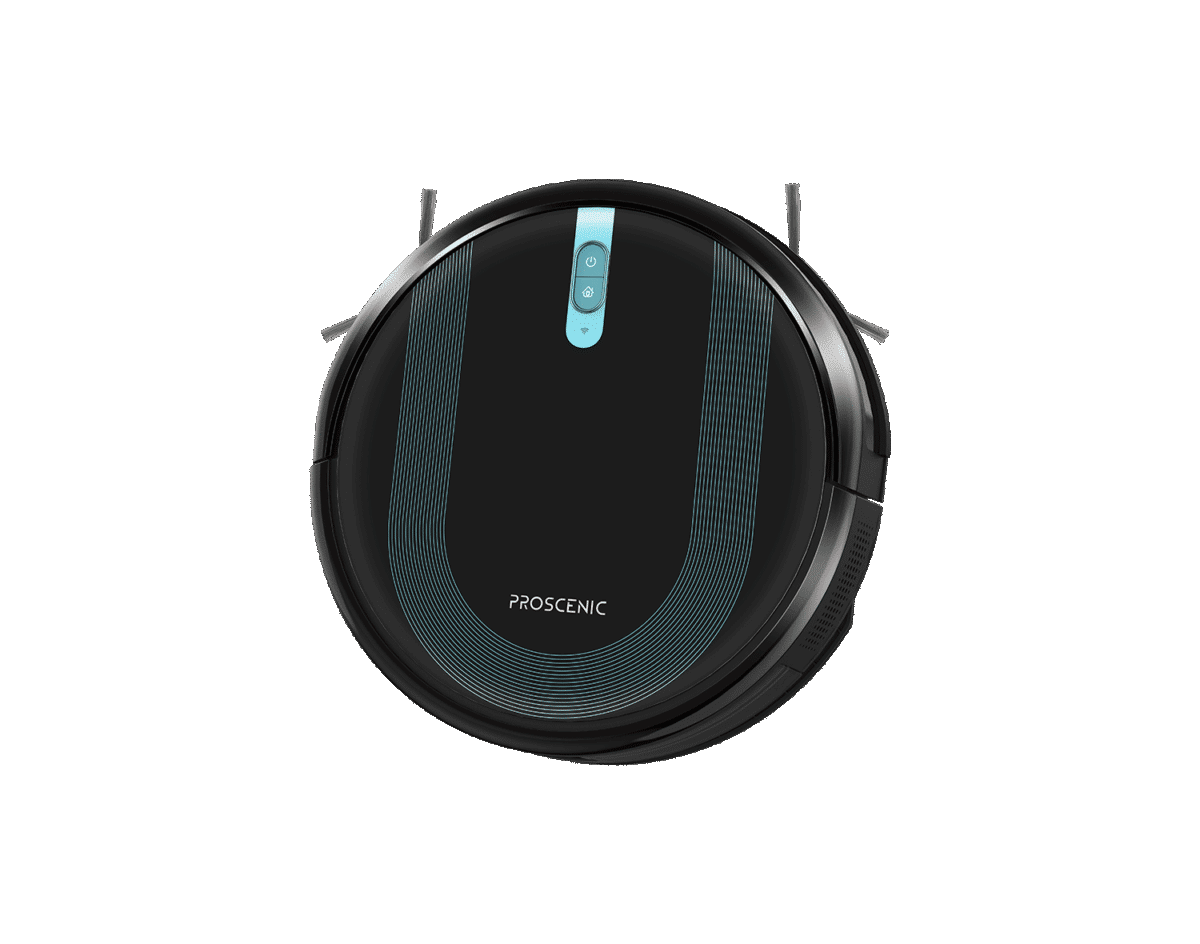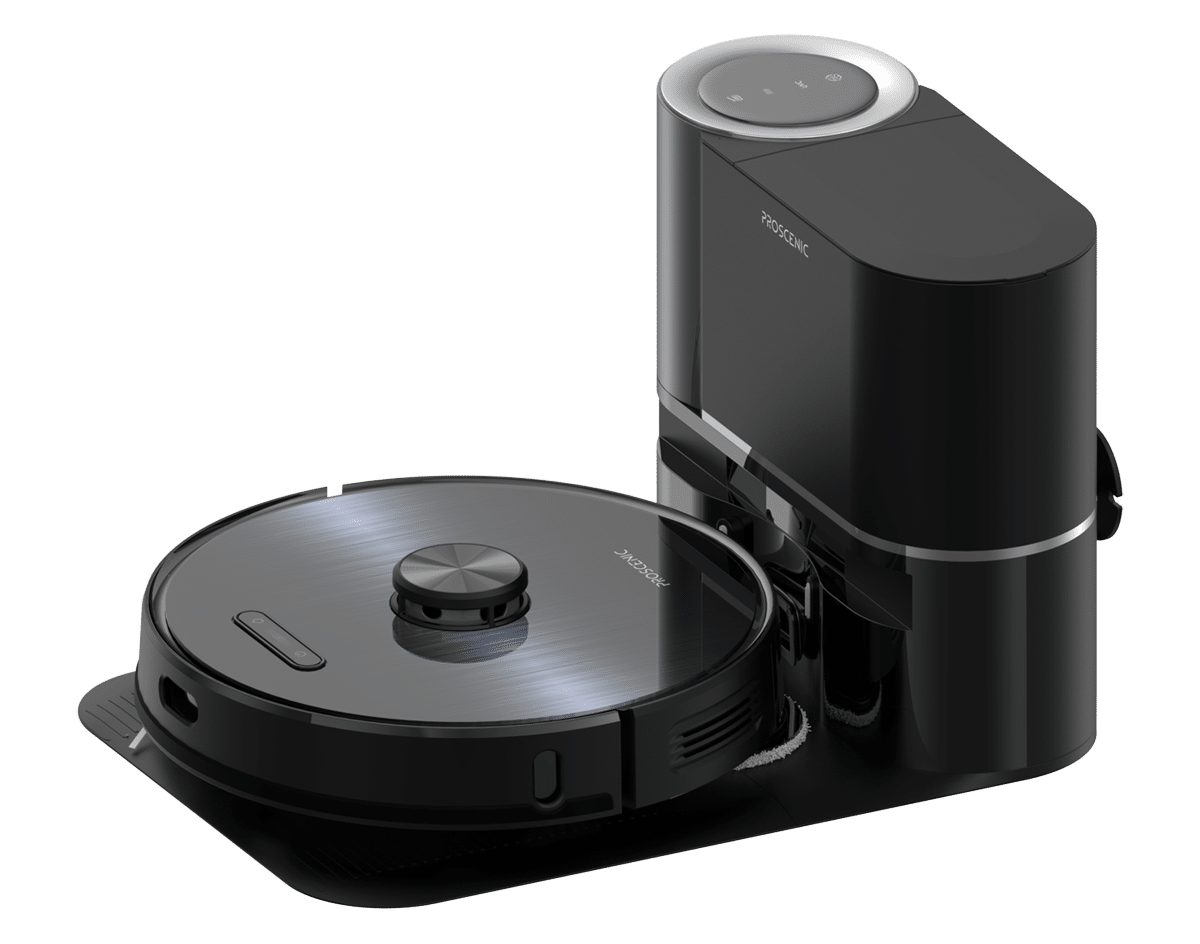Robot Vacuum Cleaners
In our product range, you will find robot vacuums from our own brand: the Robotec and from Proscenic. These are excellent home assistants that will keep your home impeccably clean at the best prices on the market. To help you choose the right robot vacuum, here’s a brief guide:
Robotec R7 Max is a state of the art robot vacuum cleaner. The technical capabilities of R7 Max are too advanced to explain them in a few sentences.
Proscenic 850 mini is the simplest machine suitable for a user who has not high technical demands but is looking for a simple machine, easy to use with the best price.
Showing all 3 results
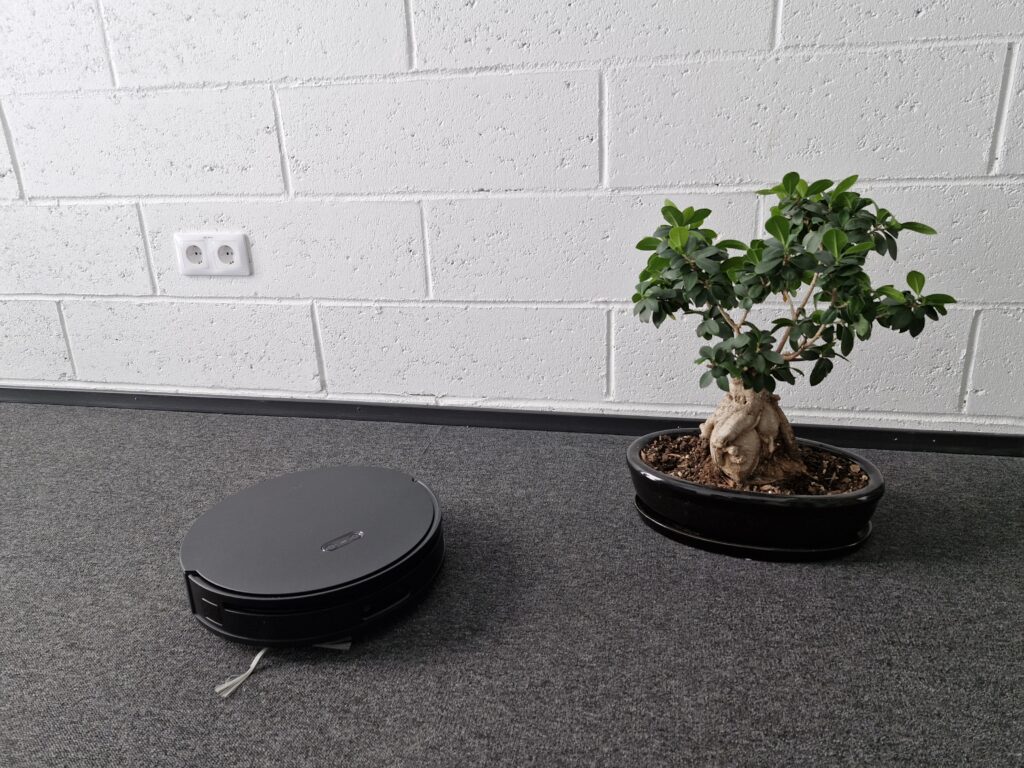
Are you unsure which robot vacuum cleaner to choose? Don’t worry! In this buying guide, we will try to explain the important factors and indicators that play a crucial role in selecting a robot vacuum cleaner as clearly as possible.
Compared to the first robot vacuum cleaners that entered the market more than 20 years ago, this field has made an immense leap forward. What was once considered a luxury item, today almost every home has a decent robot vacuum cleaner. The best modern robot vacuum cleaners can even have AI navigation technology, obstacle detection skills, and self-cleaning dust and wet cleaning stations. The latest technologies ensure that your home remains clean for up to 3 months without you lifting a finger.
It’s so convenient that it’s no wonder most of us are turning to robot vacuum cleaners as a solution for home cleaning. In the following guide, we’ll take a look at the features that a top-notch robot vacuum cleaner should have, review the various options, and perhaps also consider the strengths and weaknesses of specific devices.
Before anything else, you should start by setting your budget. The prices of robot vacuum cleaners can range from a few hundred Euros to 1500 Euros. We recommend thinking about the features you want from a robot vacuum cleaner and perhaps not choosing the most expensive gadget on the market, and likely avoiding the cheapest one too.
Which robot vacuum cleaner should you choose?
Firstly, you should determine your own desires and needs. What should you consider before making a decision?
How big is your home?
Invariably, cheaper robot vacuum cleaners are designed for smaller spaces. They simply cannot handle larger areas. Even if their battery allows it, they can get lost in a large home or miss some rooms.
Do you want your home to be just tidy, or do you also want various convenience features?
Cheaper robots typically do not offer virtual walls or other similar exciting features. They can be manually taken to a specific room and left to clean there. It’s really convenient to send the robot to clean a dirty hallway via an app, for example. Or set up a temporary virtual wall for the kids’ room to prevent the robot from entering a room full of toys. Laser navigation machines offer such possibilities.
Do you want the robot to have a mopping function?
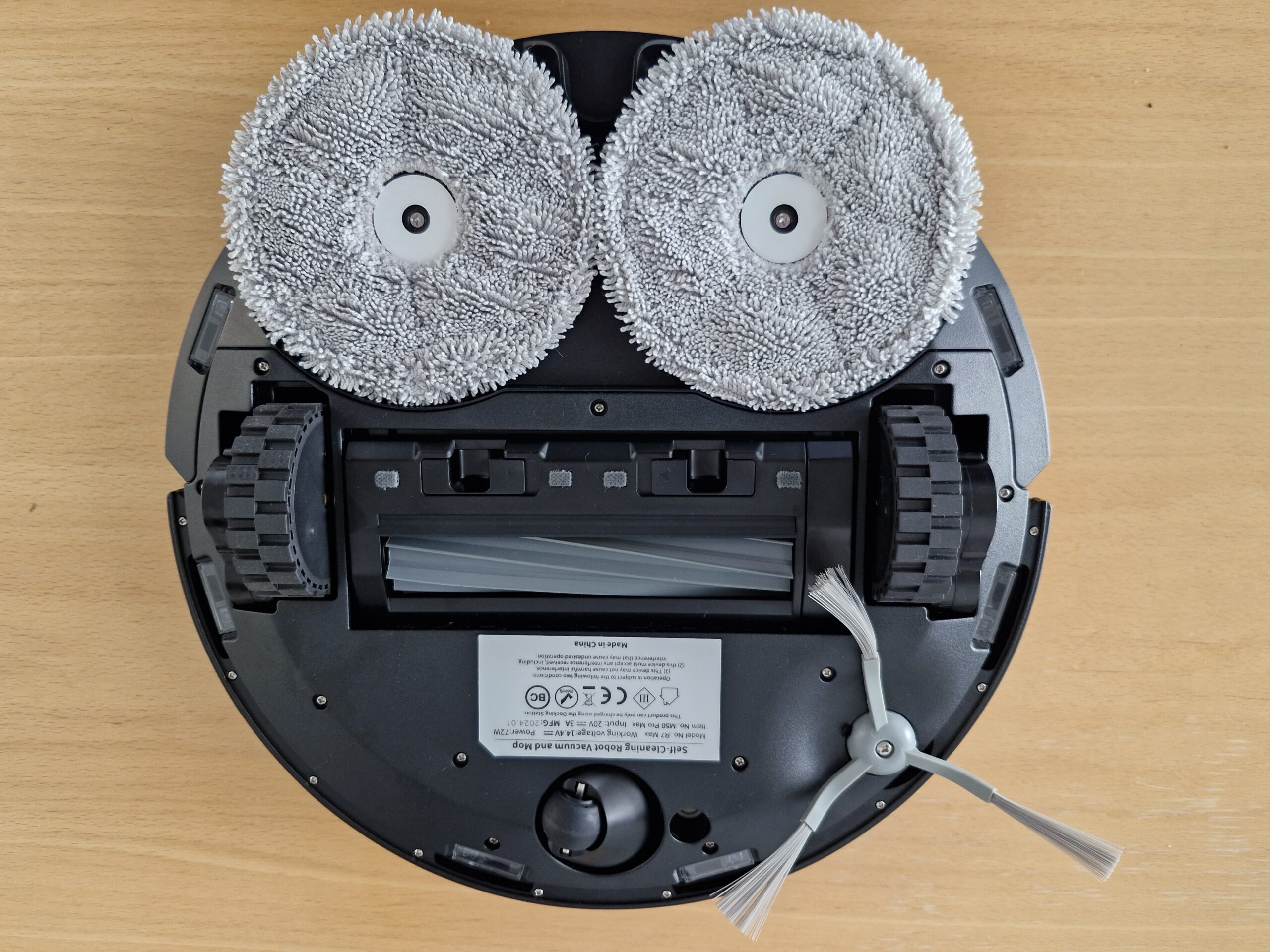 Today, there are several more affordable robot vacuum cleaners on the market that handle wet cleaning just as well as the more expensive versions. Therefore, the need for wet cleaning is not necessarily a reason to choose a more expensive robot.
Today, there are several more affordable robot vacuum cleaners on the market that handle wet cleaning just as well as the more expensive versions. Therefore, the need for wet cleaning is not necessarily a reason to choose a more expensive robot.
However, top-notch performance is offered by, for example, the Robotec R7 Max, which can perform both wet and dry cleaning simultaneously. Additionally, the R7 model has rotating and pressure-applying mopping pads. It’s still sensible to let the robot vacuum first and then send it to mop.
A mopping robot vacuum cleaner that cleans well is certainly an advantage over one that doesn’t.
What should you definitely consider when purchasing a robot vacuum cleaner?
There is no robot vacuum cleaner that doesn’t get stuck somewhere.
Robot vacuum cleaners are not yet smart enough to successfully free themselves from cords, sucked-in curtains, or carpet fringes. Sometimes they manage, but mostly not. After purchasing a robot vacuum cleaner, you’ll likely understand within a few uses which areas of your home are challenging for the robot and can either remove these obstacles before each cleaning session or eliminate them from your home altogether.
Generally, robot vacuum cleaners have difficulty navigating the following elements:
- Soft or long-fringed carpets: By soft carpets, we mean those that the robot crumples and then gets stuck on. Fringes can easily get caught in the robot, causing it to stop. Typically, robots also struggle with small bathroom rugs and similar items, often moving and crumpling them.
- Long curtains that fall to the floor: If you have such curtains at home, you can be sure that the robot will get tangled in them and then stop. Curtains should not be damaged by this (unless they are pure white), but it’s smarter to lift them before the robot starts working.
- Tangles of cords: The robot can also get stuck in cord tangles. Even if it doesn’t, it’s hard for it to clean around them. In fact, cords lying on the floor are generally hazardous and should be tidied up and removed from the floor anyway.
Robot vacuum cleaners don’t always clean all carpets thoroughly.
It’s unfortunately a fact that if you have something like a sheepskin rug or another extremely soft carpet, the robot vacuum cleaner simply cannot pick up all the dust and dirt from it. No matter how good it is, it’s just not possible. The same can be said for doormats. They need to be shaken out occasionally.
To make it easier for you we have also constructed a robot vacuum comparison table which can be found in our blog.
Which robot vacuum cleaner should you buy?
The Robotec R7 Max is a robot vacuum cleaner for the most demanding person, equipped with all the latest features and comes with an automatic dry and wet cleaning station. According to the manufacturer, the Robotec R7 Max is suitable for homes up to 350 m², but we recommend it for cleaning areas up to about 250 m².
The Robotec R7 Max provides excellent results, is equipped with some of the most innovative features on the market, and is much more competitively priced compared to other products with similar specifications.
Pay attention to after-sales service
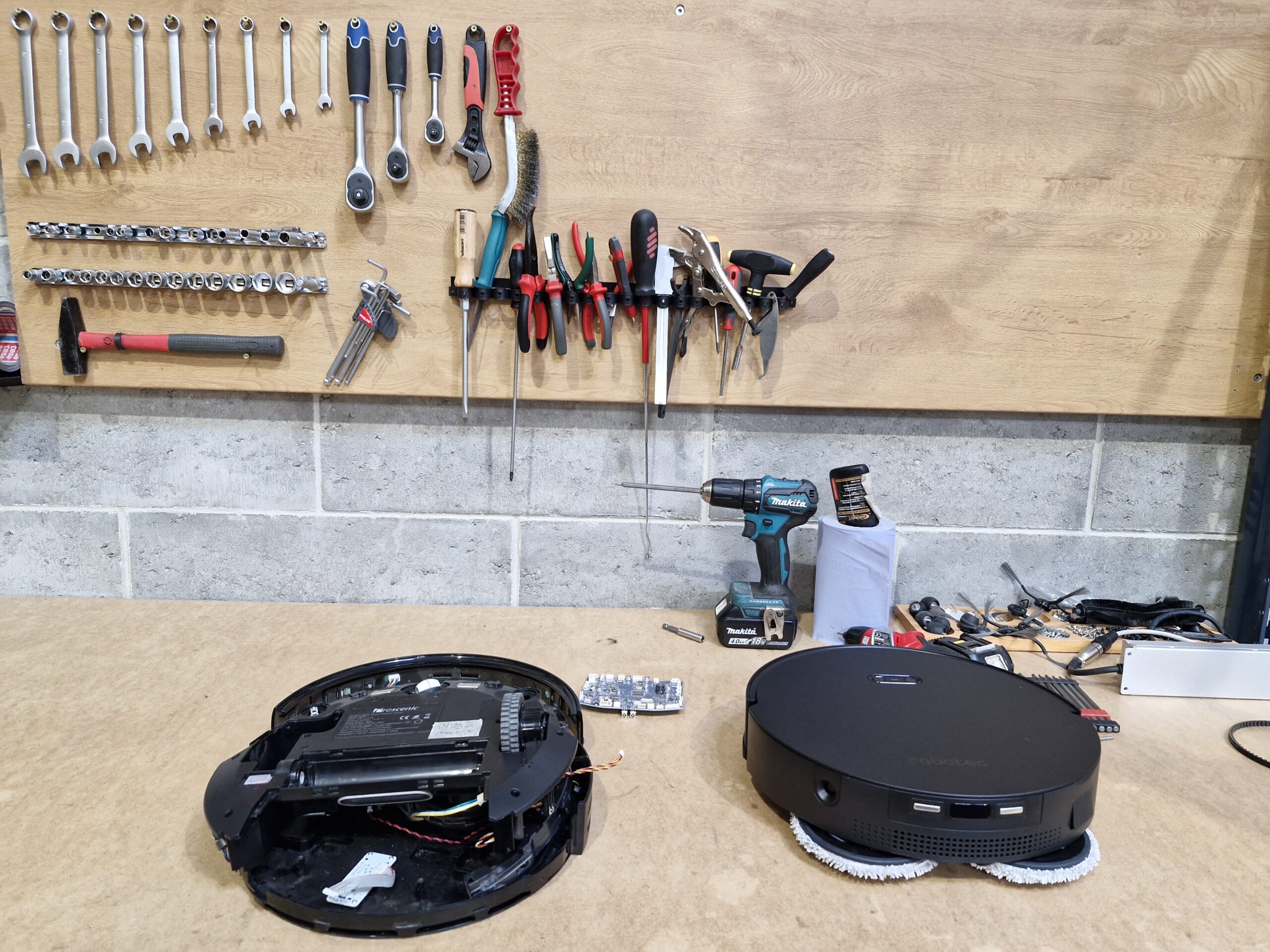 When buying your new robot vacuum cleaner from a large online retailer or, conversely, from an unknown online store, the customer is often left to deal with issues alone after the transaction is completed. This is not the case with us. It’s not uncommon for us to help a customer connect the robot to the mobile app or set it up over the phone.
When buying your new robot vacuum cleaner from a large online retailer or, conversely, from an unknown online store, the customer is often left to deal with issues alone after the transaction is completed. This is not the case with us. It’s not uncommon for us to help a customer connect the robot to the mobile app or set it up over the phone.
As you can see from the image on the right we have established the most professional after-sales technical department in the market.
Choosing a robot vacuum cleaner – questions to ask yourself before making a decision
Why do you need a robot vacuum cleaner?
The future is here, and robots do everything for us: cars drive themselves, drones navigate the skies, and robot vacuum cleaners can manoverue around furniture. A robot vacuum cleaner keeps everything relatively clean without you needing to hire a cleaner or spend time scrubbing floors instead of spending time with your kids.
A robot vacuum cleaner does not completely replace a traditional vacuum cleaner, but it is a great help in picking up all sorts of things left behind as we live in different rooms: food scraps, cat litter, various hairs, dust bunnies, and more. They are also suitable for offices. The last thing you need to worry about when working on a tight schedule is why the floor is dirty. Many robot vacuum cleaners can be programmed to work once a day or several times a week, and many come with a corresponding app. If you are concerned about dust and allergies, you should know that most vacuum cleaner models come with a HEPA filter.
How big is your home?
Important things first: before you rush to buy, check how big your house is. Some models work best in small environments, while models like the Robotec R7 Max are designed for much larger buildings (up to 350 square meters) or rooms. Your choice generally depends on the size of your home.
You should also find out how much free space there is under your furniture for the robot to pass through. Laser navigation and room-mapping robot vacuum cleaners are generally tall, so they do not fit easily under cabinets and beds. The Proscenic 850T is less than 8 cm high, but it is not uncommon for a robot vacuum cleaner to be over 10 cm high. These units are usually smart because they map your home, and the height requirement is due to the “tower” on top.
Do you have hardwood floors or carpets?
Most robot vacuum cleaner models can handle both types of flooring, but specific versions are available that best suit one or the other. All the robot vacuum cleaners in our product range are capable of sensing a sudden change in the surface and can accordingly adjust the intensity of their motors.
If you have very little floor space and only hardwood floors, you might find an adequate helper for maybe a couple of hundred euros. However, if you want something better, you’ll have to spend a bit more.
As far as the flooring is concerned, whether it’s soft or hard, it doesn’t matter which of our robot vacuum cleaners you choose. They are all powerful and automatically increase their suction when encountering a soft carpet.
Do you have dogs or cats?
Fortunately, many manufacturers have taken it upon themselves to create machines that can clean up after pets. Several models on the market can easily handle pet hair, whether from a dog or cat. If you suffer from allergies, many robot vacuum cleaners come with a HEPA filter, which helps remove irritants from your home.
The downside is that if you constantly have the machine cleaning up after your pets, you need to be prepared to perform maintenance tasks. Items like the front wheel, roller brushes, side brushes, and HEPA filters need to be cleaned and replaced regularly. You should also remember to regularly empty the dustbin in the machine if you have it clean up after your cat every day; otherwise, it will get full. Try to find a dustbin that is larger so you have to worry less about constant emptying. Smaller bins will likely fill up after a single use. This is where robots with cleaning stations come in handy.
Is the Wi-Fi capability of the robot vacuum cleaner important to you?
The internet is an amazing thing that allows us to stay connected with other people and household appliances. It’s a well-known fact that while many manufacturers offer apps, they don’t always work 100% as they should. To be honest, using the apps for the products we sell can sometimes be quite cumbersome. However, we can confidently say that they work, and we use them ourselves every day. We also help our customers with any compatibility and other app-related questions that may arise.
If the robot vacuum cleaner has app support, it likely also has Amazon Alexa and Google Assistant integration possibilities. If this is true, you can give your robot vacuum cleaner voice commands like “Start cleaning!” and it will begin its task.
Battery capacity is an important indicator for a robot vacuum cleaner
The battery is one of the most important components of a robot vacuum cleaner, and what matters most is its capacity. Essentially, the larger the battery capacity, the larger the area it can clean.
Don’t take too seriously the claims that the battery size of robot vacuum cleaners is not important because some (though only some) go to charge themselves when the battery runs low and continue from where they left off. This is because, in general, it takes 3-4 hours to charge a robot vacuum cleaner, and it’s just not a reasonable solution if cleaning the entire house or area takes, for example, 8 hours, including charging.
The average working time of a robot vacuum cleaner is about an hour and a half to two hours. The Robotec R7 can operate for up to 5 hours continuously in low mode.
Robot vacuum cleaners in general and more specifically about their differences
Owning a robot vacuum cleaner is no longer a marvel. Today, many Estonian homes have robot vacuum cleaners that take care of floor cleaning, either partially or entirely. In the following section, we will review the main differences between robot vacuum cleaners and what distinguishes cheaper machines from more expensive ones.
We are not talking about features such as wet cleaning or going to charge when cleaning is finished. Such capabilities are available in almost every model. Instead, we mean their intelligence, i.e., their mapping and navigation abilities.
In general, robot vacuum cleaners can be divided into three categories based on their navigation skills:
- Robot vacuum cleaners that change direction when encountering an obstacle;
- Robot vacuum cleaners that use a gyroscope for navigation;
- Robot vacuum cleaners that use infrared laser or LiDAR for navigation;
- Robot vacuum cleaners that use a camera for navigation.
Obstacle-responding robot vacuum cleaners
The first category generally includes the cheapest robot vacuum cleaners. These machines move in a straight line until they encounter an obstacle. When they bump into an obstacle, they change direction and continue straight in the new direction. These models often leave several areas uncleaned in larger spaces and may no longer be the most optimal solution today.
Such machines usually take more time to clean a home. Research shows that they need to work three times harder to clean a certain area compared to a new-generation robot vacuum cleaner.
We no longer offer robot vacuum cleaners with this navigation system in our product range.
Gyroscope-based navigation robot vacuum cleaners
Next, let’s look at robot vacuum cleaners that use gyroscope technology for navigation. Such a robot vacuum cleaner determines its position using a computer, movement sensors, and rotating sensors or gyroscopes. The robot vacuum cleaner determines its location based on its movement speed and previous position.
These robot vacuum cleaners can apply systematic cleaning instead of a zigzag cleaning path, making them work much more efficiently and effectively. Devices using gyroscope technology virtually divide rooms into smaller areas and clean them one by one.
Such a robot vacuum cleaner can also create an initial map of its cleaning route, but it cannot handle a detailed map for issuing separate commands later. Compared to obstacle-responding robots, gyroscope robot vacuum cleaners are slightly more expensive but certainly not budget-breaking.
Laser-based navigation robot vacuum cleaners
Robot vacuum cleaners that navigate using lasers are the smartest. Laser technology helps them quickly identify various objects, obstacles, and walls, and determine their distance. The same (albeit much more advanced) technology is used, for example, by Uber's self-driving cars.
This technology allows the robot vacuum cleaner to work as efficiently as possible and not miss spots that other cleaners leave uncleaned.
Additionally, it enables, in collaboration with SLAM technology, to map your home and create a real-time map. The created maps allow you to use all the smart functions of the robot vacuum cleaner. For example, you can draw virtual walls or zones on these maps where you don’t want the robot to go.
Most of such machines can also clean specific rooms or areas on command. This means that if only the hallway needs cleaning, you can conveniently send the robot to clean the hallway via the app. If the kitchen is also dirty, a map-enabled robot vacuum cleaner allows you to direct it to clean only the kitchen and hallway.
Our experience with robot vacuum cleaners
We have tested and tried various household appliances for years, including robot vacuum cleaners. We can confidently say that our robot vacuum cleaners are among the best on the market. The rotating mop system is still "uncharted territory" for competitors, and most fall short in suction power compared to our machines.
Moreover, we offer complete support to customers who purchase from our store, from buying and setting up the machine to the maintenance process. We generally carry out warranty and repair work for Robotec and Proscenic robots in Estonia, which means that any malfunctions are resolved quickly and efficiently. Unfortunately, we cannot perform all tasks locally according to the manufacturer's prescribed conditions.
In summary about choosing a robot vacuum cleaner
Hopefully, this article has given you some idea of what to consider when purchasing a robot vacuum cleaner and which one you might need.
If you have additional questions, contact us at info@robotec.pro or call +372 53848289.
The robotec.pro team

